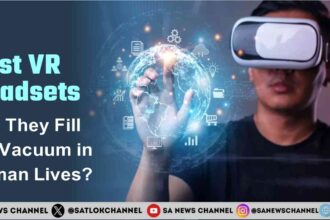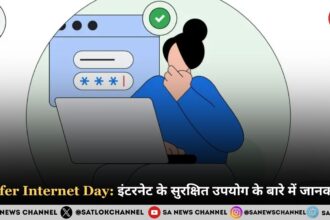Technology in Retail: Has the guaranteed 30-minutes delivery of your Domino’s pizza ever been the key reason for you to order from them? Welcome to the world of technology in retail, where rapid technological innovations thrive on your ‘instant gratification’. This article discusses how technology in retail has evolved today, how it’s integrated into our daily lives and how it truly affects us.
Significance of Technology in Retail
- In an era where consumer expectations are higher than ever, leveraging technology is not merely an option but a necessity for retailers aiming to stay competitive.
- Technological innovations have enabled retailers to streamline supply chains, personalise marketing efforts, optimise inventory management, and also offer seamless shopping experiences across multiple channels.
- However, technology is not without the constant, persistent data security threat.
Landmarks in the Evolution of Technology in Retail
Technology in Retail: Though it is difficult to point out an exact turning point in technology in retail, here are few that were pivotal:
Point of Sale Systems (POS)
- The introduction of electronic cash registers and barcode scanners in the late 20th century changed transaction processing in a big way.
- The POS innovation in technology in retail made retailers realise the potential of what smoother processes can do to their business. It helped in reducing errors and speeding up checkouts.
E-commerce Platforms
- The rise of the internet gave birth to online shopping – a modern form of shopping that wasn’t still as popular until the Covid-19 pandemic.
- This digital transformation in retail allowed retailers to reach a global audience and expand their horizons beyond their physical store.
Mobile Commerce and Apps
- The proliferation of smartphones led to mobile commerce – nothing short of a feat, considering clients are now purchasing not just goods on a phone, but also bidding in auctions for enormous sums.
- Retail technology now enables consumers to shop anytime and anywhere, further blurring the lines between physical and digital retail.
Omnichannel Retailing
- Retailers began integrating various shopping channels (both online and offline) to provide a more cohesive customer experience.
- Innovations in technology in omnichannel retailing have been continuous and extensive, especially in this last decade.
Advanced Data Analytics and AI
The birth of AI has seen it seep into all sectors, especially in this last decade. The latest phase of technology in retail involves harnessing big data and Artificial Intelligence (AI) to gain insights into consumer behavior. The data gathered helps personalise retail offerings to consumers, marketing and optimisation of operations.
Current Retail Technology Innovations
Technology in Retail: Some notable technological innovations that have reshaped the retail landscape:
Artificial Intelligence (AI) and Machine Learning (ML)
- Retailers are utilising AI and ML to analyse vast datasets, predict consumer preferences and offer personalised recommendations based on this data.
- As an example – whether it is the beauty industry or the health industry, as examples, personalised emails using AI technology is a trend most retail giants have hopped onto.
- These emails are formulated by AI based on the data insights gathered from multiple sources.
- An unnerving practice is also tracking client web search history and cashing on fear-mongering, driving them to purchase.
- Brands also believe this has improved marketing metrics has led to better customer engagement, also resulting in impulse buying.
Augmented Reality (AR) and Virtual Reality (VR)
- Brands are incorporating AR and VR to enable shopping to consumers who find it difficult to visit physical stores.
- This innovation has been adopted as a technology in retail, opening up a world of possibilities for both retailers and consumers, especially in diminishing geographical constraints and in providing a close-to-reality perspective of products to clients.
- Example of AR technology in retail: Online furniture retailers are increasingly incorporating the use of AR in their online platform and mobile selling apps to allow customers to visualise how well a product looks in their homes before the decision to purchase.
- Example of VR technology: Lenskart is a notable example of integration of VR in retail technology. Consumers can see how eyeglasses look on their face and select accordingly. Adding VR to their selling tools helped Lenskart cut down the time-intensive process of trying multiple spectacle frames for consumers, and helped firm up choices much time-effectively.
- Online sellers of contact lenses are an additional example of how VR aids technology in retail, which makes it easier for consumers to visualise which coloured contact lens suits them better.
Contactless and Mobile Payments
- Near Field Communication (NFC) technology and mobile wallets have changed the ways we transact with money today.
- Further innovations like UPI payments (Gpay, Phonepe, and others) aside from debit and credit cards, have made money transfers seamless, yet network-dependent.
- The adoption of contactless payment methods offers consumers a faster and what the retail industry claims as a ‘more secure checkout experience’.
- This shift in technology in retail has been particularly more pronounced in the wake of the COVID-19 pandemic.
Also Read: AI & Technology: The Future of Work And Jobs
Blockchain Technology
- Technology has always been a double-edged sword.
- Security has always been a constant threat regardless of how splendid a certain technological innovation has been.
- To enhance transparency and trust, retailers are exploring blockchain for supply chain management in order to ensure product authenticity and reduce fraud.
- Though this is applicable to all online retailers, industries like luxury goods are taking it more seriously due to the high value financial transactions.
Robotics and Automation
- An increasing number of retail companies, especially the bigger players in the market, are incorporating automation in their warehouses and stores.
- This also helps them streamline operations and reduce human effort.
- For example, in-store robots assist customers with finding products and managing inventory driven by data inputs in its system.
- Though this retail technological trend is aimed at improving efficiency and customer service, it has also contributed to layoffs and unemployment.
Sector-wise Insights of Technology in Retail
Technology in Retail: Different retail sectors have embraced technology uniquely to cater to their specific needs. Some examples:
Fashion Retail
- Luxury brands like Balenciaga and Burberry are leveraging AI and digital product passports (DPP).
- This innovation in retail technology through subculture alignments and augmented reality helps achieve greater transparency. It also enables clients to make informed buying decisions given the high-ticket items sold within the luxury landscape.
- Implementation of DPPs is also now in accordance with the European Union’s agenda for a more circular economy.
Grocery Retail
- Leveraging on words like ‘quick’, the quick commerce sectors take advantage of consumer psychology, offering instant gratification by delivering goods within 30 minutes.
- Domino’s was one of the earliest online food retailers to offer pizza delivery within 30 minutes.
- The quick commerce sector in India, dominated by companies like Zomato’s Blinkit, accounted for over two-thirds of all e-grocery orders in 2024. These platforms, which deliver products in minutes, are expected to grow by 40% annually until 2030, driven by expansion into new categories and regions.(Source)
- Currently, there are many companies in the quick commerce segment, for example: Tez by Amazon, BB Now by BigBasket, Flipkart Minutes, M-now by Myntra, etc.
Home Goods Retail
- As discussed earlier, furniture retailers use AR technology in their selling modules.
- Retailers are implementing AR to allow customers to visualise products in their own spaces.
- This helps in decision-making and reducing return rates.
- This technology has become a valuable tool in the home decor industry.
Beauty and Personal Care
- The beauty and personal care industry primarily runs on fear-mongering and ego-boosting.
- Leveraging AI in the beauty and personal care segment is aimed at alleviating fears of ‘how will it look on me?’ and fan consumer ego of ‘suits me the best’.
- AI-driven virtual assistants and AR offer virtual try-ons, allowing customers to see how products would look on them before purchasing.
Retail Technology in India
Technology in Retail: India’s retail sector is experiencing a huge shift in retail technology. Some insights here:
- Big Data Analytics: Indian retailers are milking big data to personalise customer experiences, forecast demand, implement dynamic pricing and optimise supply chains.
- E-commerce and Mobile Commerce: Affordable internet in India has led to a massive escalation of smartphones. This in turn has contributed to online shopping in a big way. As a result, Indian retailers are also investing in mobile apps and responsive websites to cater to this growing segment.
- Digital Payments: The government’s ‘Digital India’ has made way for digital payments in a significant way. Initiatives like UPI have also led to widespread adoption of cashless transactions, making shopping more convenient for consumers.
- Quick Commerce: The rapid delivery model that offers delivery within minutes has gained significant traction in urban areas. Catering to the demand for instant gratification, the new-age ‘baniyas’ like Blinkit have capitalised massively on this trend.
Everyday Interactions with Retail Technology
Technology has integrated seamlessly into our daily shopping experiences, especially since the Covid-19 pandemic.
From discovering products to making purchases and even our post-purchase engagement, retail technology percolated in our lives often in ways we might not even notice. Let’s take a look at some examples.
Product Discovery and Research
- Social Media and AI-Driven Ads: Platforms like Instagram, Pinterest and YouTube, X, etc., use AI algorithms to display personalised product recommendations based on our interests, search history and online behaviour. Google also tracks our web search history and then offers tailored recommendations in Google ads.
- Voice Search and Smart Assistants: Devices like Alexa, Siri and Google Assistant have become a new way of life. These virtual assistants can even help us find and compare products with simple voice commands.
- Augmented Reality (AR) Try-Ons: As discussed earlier in this article, many beauty and eyewear brands now allow us to virtually try products using AR filters before purchasing.
In-Store Shopping Enhancements
- Smart Mirrors and Fitting Rooms: In some high-end fashion stores, smart mirrors are being used for client engagement and experience. Smart mirrors suggest styling options and allow consumers to request different sizes even without leaving the fitting room.
- Self-Checkout and Contactless Payments: Supermarkets and department stores now have self-checkout kiosks and tap-to-pay options. For example, all supermarkets and department stores in Amsterdam work in this module, using barcodes and barcode scanners, where consumers can themselves scan the products they wish to purchase, and conclude payment through payment kiosks via their prepaid shopping cards. This process also speeds up transactions, ends queues and reduces the need for cash.
- QR Codes for Instant Information: We scan QR codes on product tags to access details like customer reviews, sustainability information and also usage instructions.
Online Shopping and Personalisation
- AI-Powered Recommendations: While browsing through e-commerce platforms like Amazon and Flipkart, we often come across product suggestions. These are based on our browsing and purchase history.
- Chatbots for Customer Support: The customer support chat we approach for help are, in reality, AI chatbots that assist with queries and resolve issues.
- One-Click Ordering: We are often lured into impulse buys through features like one-click checkout and words like ‘buy now’.
Post-Purchase Engagement
- Real-Time Order Tracking: Whether ordering groceries or food delivery, we receive real-time updates on our order status through apps and SMS notifications.
- Loyalty Programmes and Gamification: We receive personalised discounts, digital coupons and gamified reward points that encourage repeat shopping.
The Dark Side of Retail Technology: How It Captures and Controls Us
Technology in Retail: While technology has changed the retail landscape, making shopping more convenient and personalised, it has also introduced significant drawbacks. Many of these advancements were designed not only to enhance the consumer experience, but also to subtly exert control over our choices, behaviours and even our financial habits.
Constant Surveillance and Data Exploitation
- Every time we browse an online store, use a loyalty card, or just simply scan a QR code, we leave behind a digital footprint. Retailers collect vast amounts of data that is a result of this tracking. Tracking of our preferences, habits and spending patterns, to name a few.
- AI-powered recommendation engines nudge us time and again towards purchases we may not have intended earlier. This is the subtle manipulation of our buying behaviour.
- Data security has been a constant threat with evolving technologies since the beginning. Infact, companies often monetise this data by selling it to third parties. This is a critical concern about privacy breaches and targeted advertising that feels intrusive.
The Illusion of Choice and Manipulative Algorithms
- Retail platforms create an illusion of choice while cleverly steering us and our decisions towards specific products they wish to pitch. The truth is that algorithmic recommendations often prioritise items with higher profit margins rather than what’s best for us.
- Limited-time offers, flash sales and ‘only a few left in stock’ messages are further examples of how marketing is designed to trigger impulse buying, exploiting psychological triggers like Fear Of Missing Out (FOMO).
- Another unethical practice is of personalised pricing. This is a concept where different customers see different prices based on their browsing history. It leads to unfair pricing practices.
Addiction to Shopping and Instant Gratification
- The convenience of one-click ordering, digital wallets and instant delivery has made shopping effortless. As it reduces the time, we tend to spend more considering easy purchases.
- Social media and AI-driven advertisements constantly tempt us with clickbaits. It makes shopping an unconscious habit rather than a deliberate, informed choice.
- Buy Now, Pay Later (BNPL) schemes and easy credit options encourage overspending. This is a big trap to consumers spiraling into cycles of debt.
Erosion of Physical Retail and Human Interaction
- Automated checkouts and AI chatbots are replacing human employees, leading to job losses in traditional retail stores.
Mental and Emotional Manipulation
- We are bombarded with continuous notifications, personalised ads and email reminders. This is an effort to keep us engaged with brands 24/7, making it difficult for us to disconnect from consumer culture.
- The pressure to ‘keep up’ with trends, especially in fashion and technology, creates anxiety and fosters unhealthy spending habits.
- Some AI algorithms are so advanced that they can predict our needs before we are even aware of them. Again, this raises ethical concerns about autonomy and free will.
The Secret Manipulation Keeping Us in Ignorance
The way we are unknowingly manipulated in our daily lives raises an important question: Is there anything in this world truly genuine? What is the root of such deep-seated deception?
Jagatguru Tatvdarshi Sant Rampal Ji Maharaj unveils the hidden reality behind this grand deception and the root of manipulation – Kaal Brahm. Also known as Kshar Brahm, Kaal is the ruler of the 21 universes, whose sole purpose is to keep souls trapped in ignorance, ensuring they remain entangled in the endless cycle of birth and death.
We are sold dreams of happiness in the packaging of wealth, success, relationships, and pleasures, all carefully marketed as the ultimate goals of life. However, as Sant Rampal Ji Maharaj reveals, these are nothing but illusions as no matter how much we achieve, we all meet the same fate – death. None of our material possessions will accompany us beyond this life, but what does remain are the karmic consequences of our actions.
This world is a web of deceit designed by Kaal Brahm to keep us away from realising our true origin. If we knew the magnificence of our real home, we would strive with all our might to return. But Kaal ensures we remain oblivious, forever chasing false happiness.
We are not mere mortals. We are the children of Supreme God Kabir, and our original home is Satlok – a divine realm free from suffering, deception and death. Unlike the transient pleasures of this world, Satlok is a place of eternal bliss, truth and abundance. Our one grave mistake is the reason we were exiled from our original place of dwelling; and it brought upon us this never-ending cycle of pain and struggle.
What is the mystery behind our existence? Why are we constantly facing so much pressure and sorrow in this world? Uncover the answers to all these pressing questions of humanity through the thought-provoking spiritual discourses of Sant Rampal Ji Maharaj:
Technology In Retail FAQs
Question: What technology is used in retail?
Answer: Several new technologies have been integrated into retail, such as AI, VR, etc.
Question: How is AI used in retail?
Answer: It is used in many ways, especially to collect big data from multiple sources.









